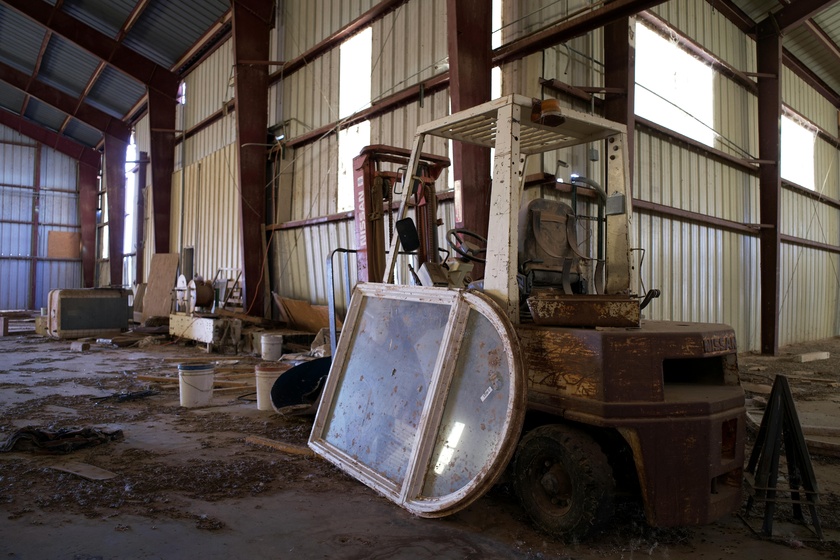A well-organized workspace is essential for maintaining productivity, reducing stress, and creating a professional environment. The way we arrange our desks, use technology and manage our time directly impacts our efficiency and well-being. Whether working from home or in an office, the need for effective workspace organization has never been more crucial. This article explores practical solutions and innovative approaches to help you create a more organized and productive workspace. From decluttering your desk to adopting ergonomic practices and leveraging technology, these tips will help you transform your work area into a haven of efficiency and comfort.
Declutter Your Desk: Simple Steps to a Tidy Workspace
A cluttered desk can be a significant distraction, making it hard to focus and find essential items when needed. Start by clearing everything off your desk and only putting back what is absolutely necessary. Use desk organizers, such as trays and drawers, to keep items in their place. Implement a filing system for papers and documents, ensuring everything has a designated spot. Regularly sort through your items to discard what you no longer need. By maintaining a clean and tidy desk, you can reduce stress and improve your focus, leading to increased productivity.
One effective strategy is to limit the number of personal items on your desk. While it's nice to have a few sentimental pieces, too many can create unnecessary clutter. Additionally, invest in cable management solutions to keep cords and wires neatly arranged. This not only improves the aesthetics of your workspace but also reduces the risk of tripping over tangled wires. Regularly wiping down your desk and cleaning your equipment can also contribute to a more pleasant and hygienic work environment.
Ergonomic Essentials: Setting Up a Healthier Work Environment
Creating an ergonomic workspace is vital for maintaining physical health and preventing discomfort or injury. Start with a good-quality chair that supports your lower back and promotes good posture. Adjust the height so your feet are flat on the floor, and your knees are at a 90-degree angle. Position your computer monitor at eye level, about an arm's length away, to reduce strain on your neck and eyes. Use a keyboard and mouse that allow your wrists to stay in a neutral position.
In addition to proper equipment, take regular breaks to move around and stretch. Sitting for long periods can lead to various health issues, so it's essential to incorporate movement into your routine. Standing desks or adjustable workstations can provide the flexibility to alternate between sitting and standing throughout the day. By paying attention to ergonomics, you can create a workspace that supports your health and productivity, making long hours at your desk more comfortable and less taxing on your body.
Smart Storage Solutions for Small Spaces
Maximizing storage in small workspaces requires creativity and smart solutions. Start by utilizing vertical space; shelves and wall-mounted storage can free up valuable desk space. Stackable storage bins and drawer organizers are excellent for keeping supplies tidy and accessible. Multi-functional furniture, such as desks with built-in storage or fold-out tables, can also be highly beneficial in compact areas.
Consider using clear containers for easy visibility of contents, which helps save time when searching for items. Under-desk storage units or rolling carts can provide additional space without taking up too much room. Pegboards are another versatile option, allowing you to hang tools, notes, and supplies within arm's reach.
Efficient use of space extends to digital storage as well. Minimise physical clutter by scanning documents and storing them electronically. Cloud storage solutions offer ample space for digital files, making them accessible from anywhere and reducing the need for physical filing cabinets.
Digital Tools for Streamlined Document Management
Efficient document management is crucial for maintaining productivity and organization in any workspace. Digital tools can significantly streamline this process, making it easier to store, share, and edit documents. Converting documents from PDF to Word is a common task that can be simplified with the right tools. This conversion allows for easy editing and updating of documents, ensuring that they remain current and accurate.
Cloud-based storage solutions such as Google Drive, Dropbox, and OneDrive enable you to access your documents from any device, facilitating seamless collaboration with colleagues. These platforms often include powerful search functions, making it easy to locate specific files quickly. Additionally, using digital signatures and PDF annotation tools can eliminate the need for printing, signing, and scanning documents, further enhancing efficiency.
Document management systems (DMS) can also automate workflow processes, ensuring that documents are routed to the right people at the right time. These systems can integrate with other digital tools, creating a cohesive and efficient work environment.
The Role of Technology in Modern Office Organisation
Technology plays a pivotal role in modern office organizations, offering solutions that enhance efficiency, communication, and productivity. Integrating technology into your workspace can streamline daily tasks and reduce manual effort. For example, project management software like Trello, Asana, or Monday.com can help track tasks, deadlines, and team progress, ensuring everyone stays on the same page.
Communication tools such as Slack, Microsoft Teams, and Zoom facilitate real-time collaboration, reducing the need for lengthy email threads and meetings. These platforms often integrate with other tools, creating a seamless workflow. Automating repetitive tasks with tools like Zapier or IFTTT can save time and minimise errors, allowing you to focus on more critical activities.
Technology also aids in maintaining an organized digital workspace. Apps for note-taking, such as Evernote or OneNote, help keep information organized and easily accessible. Password managers ensure that login information is secure yet readily available, reducing the time spent on password retrieval.
Personalizing Your Workspace: Balancing Functionality and Aesthetics
Creating a workspace that is both functional and aesthetically pleasing can significantly boost your productivity and mood. Start by selecting a colour scheme and decor that inspires and motivates you. This can range from calming blues and greens to energizing yellows and reds. Incorporate personal touches such as photos, artwork, or plants to make the space feel more inviting.
Functionality should not be compromised for aesthetics. Ensure that your workspace is equipped with all necessary tools and supplies within easy reach. Desk organizers and storage solutions can help keep the area tidy and efficient. Invest in a comfortable chair and ensure your desk setup promotes good posture and ergonomics.
Lighting is another crucial factor. Natural light is ideal, but if that’s not possible, use a good-quality desk lamp to reduce eye strain and create a well-lit environment. Personalizing your workspace also includes digital customization. Use desktop backgrounds, screensavers, and organizational apps that reflect your style and keep you organized.
Green and Clean: Sustainable Practices for an Organised Office
Incorporating sustainable practices into your office organization can contribute to a healthier planet and a healthier you. Start by reducing paper usage. Digital tools for document management, such as cloud storage and e-signatures, can significantly cut down on the need for printed documents. When printing is unavoidable, use recycled paper and set printers to double-sided printing by default.
Opt for eco-friendly office supplies, such as refillable pens, recycled notebooks, and biodegradable cleaning products. Consider energy-efficient lighting and power strips that can reduce energy consumption when devices are not in use. Setting up a recycling station in your office can encourage proper disposal of paper, plastic, and electronic waste.
Incorporate plants into your workspace, as they improve air quality and create a more pleasant environment. Choose low-maintenance plants like succulents or snake plants, which are easy to care for and thrive indoors.
Adopt sustainable commuting practices, such as cycling, walking, or using public transportation, to reduce your carbon footprint. For remote workers, creating a home office that is energy-efficient can make a significant difference.




















